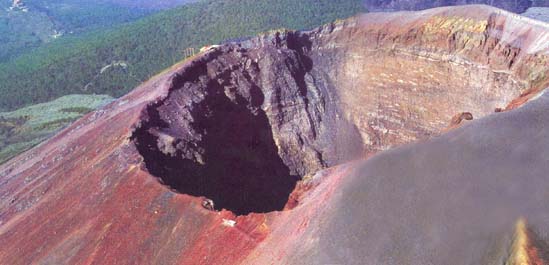Image Details

Earthquakes rumbled underfoot and a 20-mile-high column of gas and steam rose above the 4,000-foot-high crater of Mount Vesuvius (shown here) on the morning of August 24th, 79 A.D. The eruption that followed killed thousands of people, burying the town of Herculaneum under dozens of feet of lava (see photo of Herculaneum) and covering Pompeii with scalding ash and pumice. (Archaeologists from Naples recently discovered a Bronze Age settlement buried in a much-earlier eruption of Vesuvius; see “Nola: A Prehistoric Pompeii,” Field Notes.)
